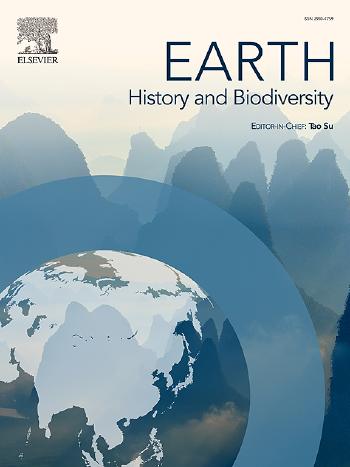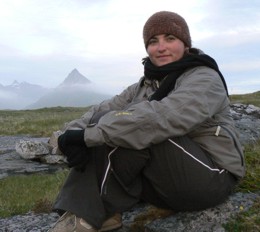-
Partager cette page
Beyond the closed-forest paradigm: Cross-scale vegetation structure in temperate Europe before the late-Quaternary megafauna extinctions
Nouvel article cosigné Florence Mazier
Publié le 25 février 2025 – Mis à jour le 25 février 2025
This study reconstructs Last Interglacial vegetation in temperate Europe, revealing a highly heterogeneous landscape influenced by local disturbances and megafauna, challenging the traditional closed-forest paradigm and providing insights for modern conservation and rewilding efforts.

The Last Interglacial (∼129,000–116,000 years ago) provides key insights into temperate European vegetation dynamics before significant anthropogenic impacts. Using LOVE (Local Vegetation Estimates) and REVEALS (Regional Estimates of VEgetation Abundance from Large Sites) models, this study reconstructs vegetation patterns across local (∼9 km²) and regional (∼100 km²) scales.
Local landscapes presented a heterogeneous mosaic, with averages of 17 % open vegetation, 21 % closed forests, and 63 % light woodlands, reflecting high fine-scale heterogeneity. Importantly, weak local-regional correlations highlight the importance of localised drivers. Longitude and, to a lesser extent, precipitation explained some variation in local vegetation openness, but heterogeneity remained unexplained, emphasising the role of disturbance regimes.
Shannon diversity and evenness varied widely, indicating a mix of species-rich and more uniform habitats and reflecting diverse ecological dynamics. Beta diversity showed high spatial turnover, suggesting composition was shaped by localised factors rather than uniform climatic drivers. Frequently represented genera, such as Artemisia, Helianthemum, Erica, Filipendula, and Plantago, indicate diverse open and semi-open habitats, shaped by disturbances and hydrological variability.
Weak climatic correlations and dominance of disturbance-adapted taxa suggest active disturbance-shaped vegetation. Large herbivorous mammals (megafauna) likely maintained vegetation openness through grazing and browsing; there is limited evidence for frequent fire activities in this period.
These findings challenge the closed forest paradigm for interglacials, revealing substantial openness and heterogeneity. This scale-explicit evidence of Last Interglacial vegetation complexity offers insights into the biodiversity and ecological functionality of pre-anthropogenic ecosystems, with implications for modern conservation and rewilding, particularly in maintaining diversity through disturbance and megafaunal interactions.
Lire l'intégralité de l'article dans Earth History and Biodiversity.
Local landscapes presented a heterogeneous mosaic, with averages of 17 % open vegetation, 21 % closed forests, and 63 % light woodlands, reflecting high fine-scale heterogeneity. Importantly, weak local-regional correlations highlight the importance of localised drivers. Longitude and, to a lesser extent, precipitation explained some variation in local vegetation openness, but heterogeneity remained unexplained, emphasising the role of disturbance regimes.
Shannon diversity and evenness varied widely, indicating a mix of species-rich and more uniform habitats and reflecting diverse ecological dynamics. Beta diversity showed high spatial turnover, suggesting composition was shaped by localised factors rather than uniform climatic drivers. Frequently represented genera, such as Artemisia, Helianthemum, Erica, Filipendula, and Plantago, indicate diverse open and semi-open habitats, shaped by disturbances and hydrological variability.
Weak climatic correlations and dominance of disturbance-adapted taxa suggest active disturbance-shaped vegetation. Large herbivorous mammals (megafauna) likely maintained vegetation openness through grazing and browsing; there is limited evidence for frequent fire activities in this period.
These findings challenge the closed forest paradigm for interglacials, revealing substantial openness and heterogeneity. This scale-explicit evidence of Last Interglacial vegetation complexity offers insights into the biodiversity and ecological functionality of pre-anthropogenic ecosystems, with implications for modern conservation and rewilding, particularly in maintaining diversity through disturbance and megafaunal interactions.
Lire l'intégralité de l'article dans Earth History and Biodiversity.





